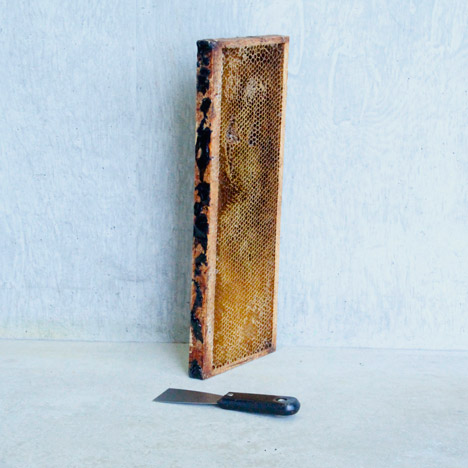Marlène Huissoud creates products with the help of insects
Graduate designer Marlène Huissoud has used materials made by bees and silkworms to craft a series of vessels and furniture (+ movie).
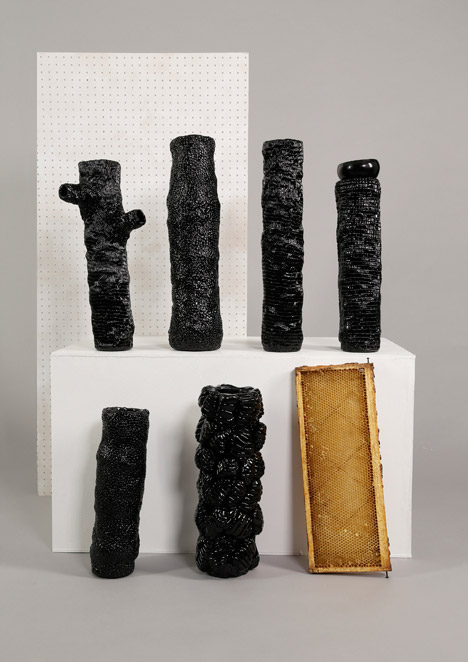
Marlène Huissoud, who comes from a family of beekeepers, sourced by-products of natural processes to create the items in her From Insects collection.
"I am interested in the viability of utilising insects and their waste streams to create future craft artefacts," Huissoud told Dezeen.
"Already science is exploring the potential of insects for food production and to satisfy our future dietary needs, however I am primarily interested in using insects as co-partners in the design process."

The first material she uses is propolis, a biodegradable resin that honey bees collect from different trees and use as a sealant in the hive.
"Once a year the beekeeper has to remove a bit of the propolis in order to extract the honey from the frames of the beehive," said Huissoud. "We are talking about small quantities, which are less than 100 grams per hive per year. It is thus a really precious and unique material."
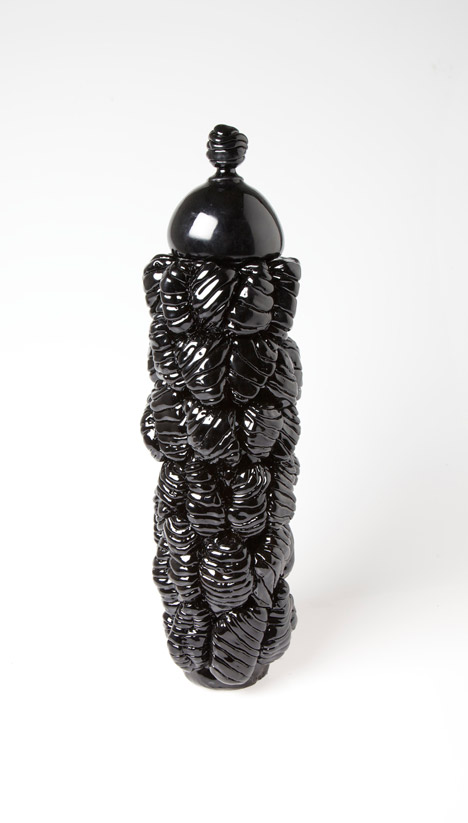
The colour of propolis depends on its botanical source and Huissoud chose to use a black variant that comes from rubber trees.
As the material has similar properties to glass, she worked with craftsmen to experiment with traditional blowing and engraving techniques.
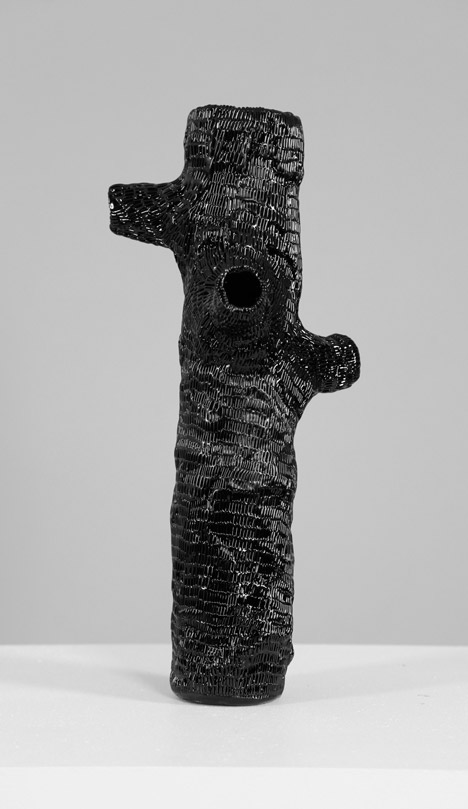
"We tried many Venetian techniques, which specifically make long stripes from a material," Huissoud said. "Although it worked, it was much too fragile to be considered for the making process in this instance. After many experiments, we succeeded in blowing the propolis using the same basic technique as with glass."
The finished vessels are shaped like tree trunks, each engraved with a different pattern.
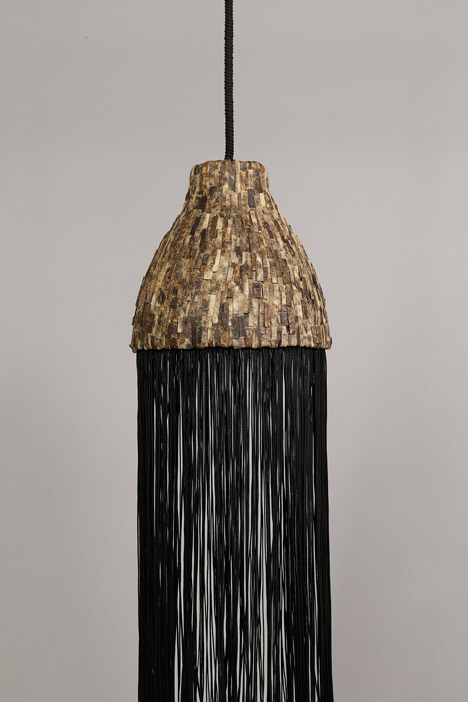
The designer also creates a material she calls wooden leather using silkworm cocoons, which are made from hundreds of metres of silk threads.
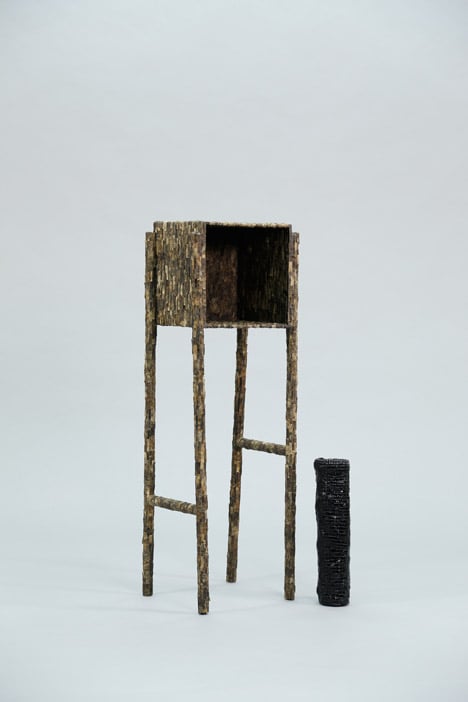
After dissecting the cocoons, the natural glue that holds the structures together – called sericin – can be reactivated by wetting and heating the fibres to create a strong paper-like material.
Huissoud produced metres of the paper and combined it with her other insect-sourced compound to make it stronger.
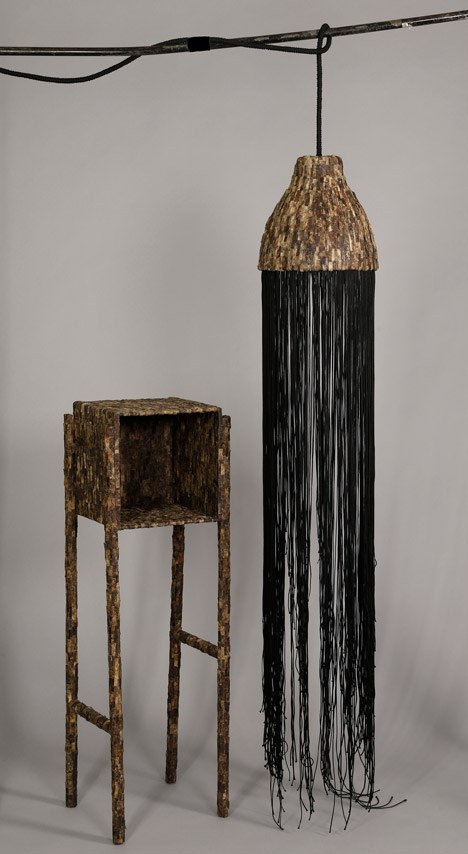
"To give strength to the material and change its natural state, I made a varnish with the propolis and applied it on top of the paper," said Huissoud. "The result is a wooden leathered material."
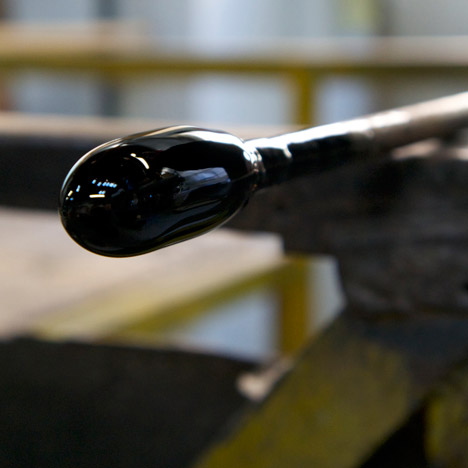
To demonstrate the material's properties, Huissoud created the Silk Cabinet and Leather Light from rectangular sections of the paper held together with the resin.
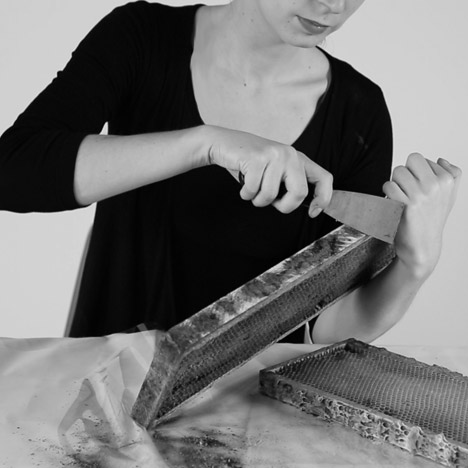
"The wooden aspect of the material comes from the thousands of thousands of fibres combined together in the silkworm's paper," she explained. "This new material can be used for different applications such as furniture design, fashion design and surface design."
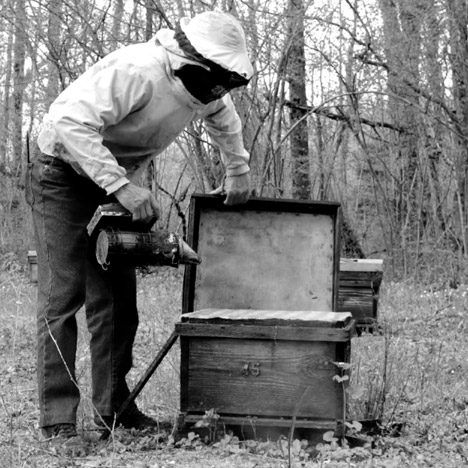
A few designers are turning insect waste into products such as ink and plastic, while others are exploring options for breeding insects as a source of food.
